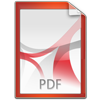
File downloads:
TerraGlas Fiber Glass Reinforced Architectural Terra Cotta Composite
MSDS: Material Safety Data Sheet
Product Identification:
- Trade Name: TerraGlas (Glass Fiber Reinforced Terra Cotta Composite)
- Manufacturer's Name:
Stromberg Architectural Products Inc. - 4400 Oneal St., Greenville, TX 75401
- Phone: (903) 454-0904
- Fax: (903) 454-3642
- email: [email protected]
- website: https://www.terraglas.com
II. Hazardous Ingredient:
Chemical Names: ACGIH TLV OSHA PEL OTHER Fiberglass: 10mg/m3 15 mg/m3 10 mg/m3 in CA
III. Physical Properties:
- Vapor Density (air=1):
- n/a
- Specific Gravity:
- 2.7-3.0
- Solubility in Water:
- 0.2%
- Vapor Pressure:
- mmHG or 20 C n/a
- Appearance and Odor Appearance:
- Material comes in solid "form molded" shapes.
- Odor:
- None
- Melting Point or Range (F):
- 1450 Centigrade = Decomposes
- Boiling Point or Range (F):
- n/a
- Evaporation Rate (Butyl Acetate=1):
- n/a
IV. Fire and Explosion
- Flash Point (F) (give method):
- Non Combustible
- Auto-Ignition Temperature (F):
- n/a
- Flammable Limits in Air (Vol.%):
- n/a
- Fire Extinguishing Materials:
- That which is appropriate for fire in surrounding materials.
- ___Water Spray
- ___Carbon Dioxide
- ___Other
- ___Foam
- ___Dry Chemical
- Special Firefighting Procedures:
- None (non combustable)
- Unusual Fire and Explosion Hazards:
- None
V. Health Hazard Information
- Inhaled:
- Dust from grinding or cutting may be irritating if excessive.
- Contact with Skin or Eyes:
- Dust from grinding or cutting may cause irritation or dry skin. Cement is strongly alkaline material.
- Absorbed Through Skin:
- n/a
- Swallowed:
- May be corrosive to the digestive tract.
- Acute:
- Exposure to glass fibers in the dust from this product may cause irritation of the skin and less frequently, irritation of the eyes, nose or throat. Cement dust and ceramic dust is a respiratory irritant and may dry the skin.
- Chronic:
- None known
- Eyes:
- Non known
- Skin:
- None known
- Inhalation:
- Long term inhalation of large amounts of respirable dust can cause lung damage.
- Ingestive:
- None known
- Swallowed:
- Dilute by giving two (2) glasses of milk or water to drink followed by fruit juices or diluted vinegar to neutralize the alkali from the cement. Consult physician.
- Suspected Cancer Agent:
- NO. This product ingredients are not found in the lists.
- California employers using Cal/OSHA:
- Regulated carcinogens must register with Cal/OSHA and the Federal OSHA carcinogen lists are similar.
- Medical Conditions Aggravated by Exposure:
- Those prone to allergies, asthma, bronchitis or pulmonary disease may experience increased irritation to the nose, throat, eyes or skin.
VI. Reactivity Data
- Stability:
-
- _x_ Stable
- __Unstable
- Conditions of Avoid:
- None
- (materials to avoid):
-
- Acids
- Hazardous decomposition
- Products (including combustion products):
- If heated to 1450 C, will release SO & CAE.
- Hazardous Polymerization:
-
- __May Occur
- _x_Will not Occur
- Conditions to Avoid:
- Keep product dry to maintain integrity.
VII. Spill, Leak and Disposal Procedures
- Spill Response Procedures:
- n/a
Preparing Wastes for Disposal
- (container type, neutralization etc.):
- Normal disposal as for any dry, inert dust (from cutting) or solids.
Note: Dispose of all wastes in accordance with Federal, State and Local regulations.
VIII. Special Handling Information
- Ventilation and Engineering Controls:
- Local exhaust, if above TLV, during cutting or grinding.
- Respiratory Protection:
- NIOSH approved respirator for dust if above TLV during cutting or grinding.
- Eye Protection:
- Dust goggles or safety glasses during cutting or grinding.
- Gloves:
- Light weight or work gloves may help reduce skin irritation from dust.
- Other clothing and Equipment:
- Coveralls or work clothes to protect street clothes from dust.
- Work Practices, Hygienic Practice:
- Keep dust production to a minimum. Keep work area clean. Do not use compressed air to "blow down" clothing. Wash exposed skin surfaces regularly with soap and water.
- Other Handling and Storage Requirements:
- Store in dry area.
- Protective Measures during Maintenance Of Contaminated Equipment:
- n/a

